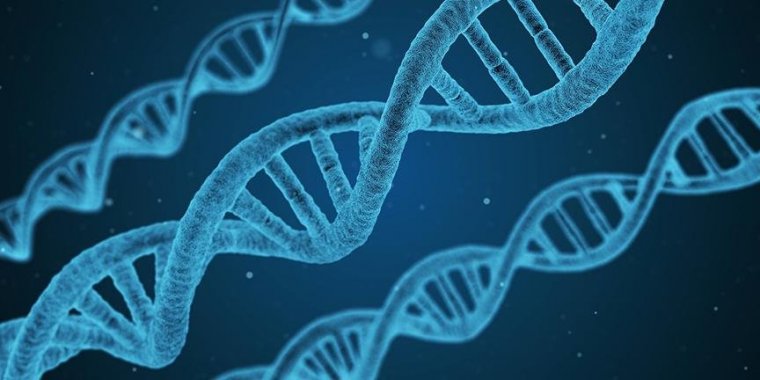| Health / Health News |
Detailed genetic study provides most comprehensive map of risk to date of breast cancer risk
A major international study of the genetics of breast cancer has identified more than 350 DNA ‘errors’ that increase an individual’s risk of developing the disease. The scientists involved say these errors may influence as many as 190 genes.

Detailed genetic study provides most comprehensive map of risk to date of breast cancer risk. Photo: qimono/Pixabay
The results provide the most comprehensive map of breast cancer risk variants to date. The researchers involved, from over 450 departments and institutions worldwide, say the findings will help provide the most detailed picture yet of how differences in our DNA put some women at greater risk than others of developing the disease.
The majority of the DNA is identical between individuals, but there are some differences, known as genetic variants, and these changes can have a profound effect, increasing an individual’s susceptibility to disease.
Our DNA – the blueprint for the human body – contains between 20,000-25,000 genes. Many of these code for proteins, the building blocks that make up the human body. Genetic variants can be located within genes, altering the protein.
However, most of genetic variants are located outside genes, sometimes regulating the function of genes, turning their ‘volume’ up or down or even off. Finding which gene is targeted by these variants is not straightforward.
Most diseases are complex, polygenetic diseases – in other words, no single genetic variant or gene causes the disease, but rather the combination of a number of them act together to increase the likelihood that an individual will develop a particular disease. Breast cancer is one such disease.
Previous genome-wide association studies (GWAS), which involve comparing the DNA of patients against that of healthy controls, have found around 150 regions of the genome that clearly affect breast cancer risk. Within these regions, researchers know there are one or more genetic changes that affect the risk of developing cancer, but rarely are they able to pinpoint the specific variants or genes involved.
Fine-mapping studies, such as this one, allow scientists to narrow down which variants contributing to the disease, how they might work and predict which are the genes involved.
“We know from previous studies that variants across our DNA contribute towards breast cancer risk, but only rarely have scientists have been able to identify exactly which genes are involved,” said Dr Laura Fachal from the Wellcome Sanger Institute. “We need this information as it gives us a better clue to what is driving the disease and hence how we might treat or even prevent it.”
In this new study, researchers from hundreds of institutions worldwide collaborated to compare the DNA of 110,000 breast cancer patients against that of some 90,000 healthy controls. By looking in much closer detail than was previously possibly, they identified 352 risk variants.
It is not yet clear exactly how many genes these target, but the researchers have identified 191 genes with reasonable confidence; less than one in five of these had been previously recognised.
“This incredible haul of newly-discovered breast cancer genes provides us with many more genes to work on, most of which have not been studied before,” said Dr Alison Dunning from the University of Cambridge. “It will help us build up a much more detailed picture of how breast cancer arises and develops. But the sheer number of genes now known to play a role emphasises how complex the disease is.”
Of the newly-discovered genetic variants, a third predispose women towards developing hormone-responsive breast cancer, the type of disease found in four out of five breast cancer patients, which respond to hormonal treatments such as tamoxifen. 15% of the genetic variants predispose women to the rarer type, estrogen-receptor-negative breast cancer. The remaining genetic variants play a role in both types of breast cancer.
In the majority of cases, the genetic change affected gene expression – in other words, how active a particular gene was and how much of a particular protein it created – rather than altering the type of protein itself. For instance, nine different variants regulate the same gene, the Estrogen Receptor (ESR1) gene.
Many other variants affect places in the DNA where the Estrogen Receptor protein binds, and, in turn regulates other genes. This highlights the importance of the ESR1 gene and its protein product, the Estrogen Receptor, in breast cancer development. (University of Cambridge)
YOU MAY ALSO LIKE





